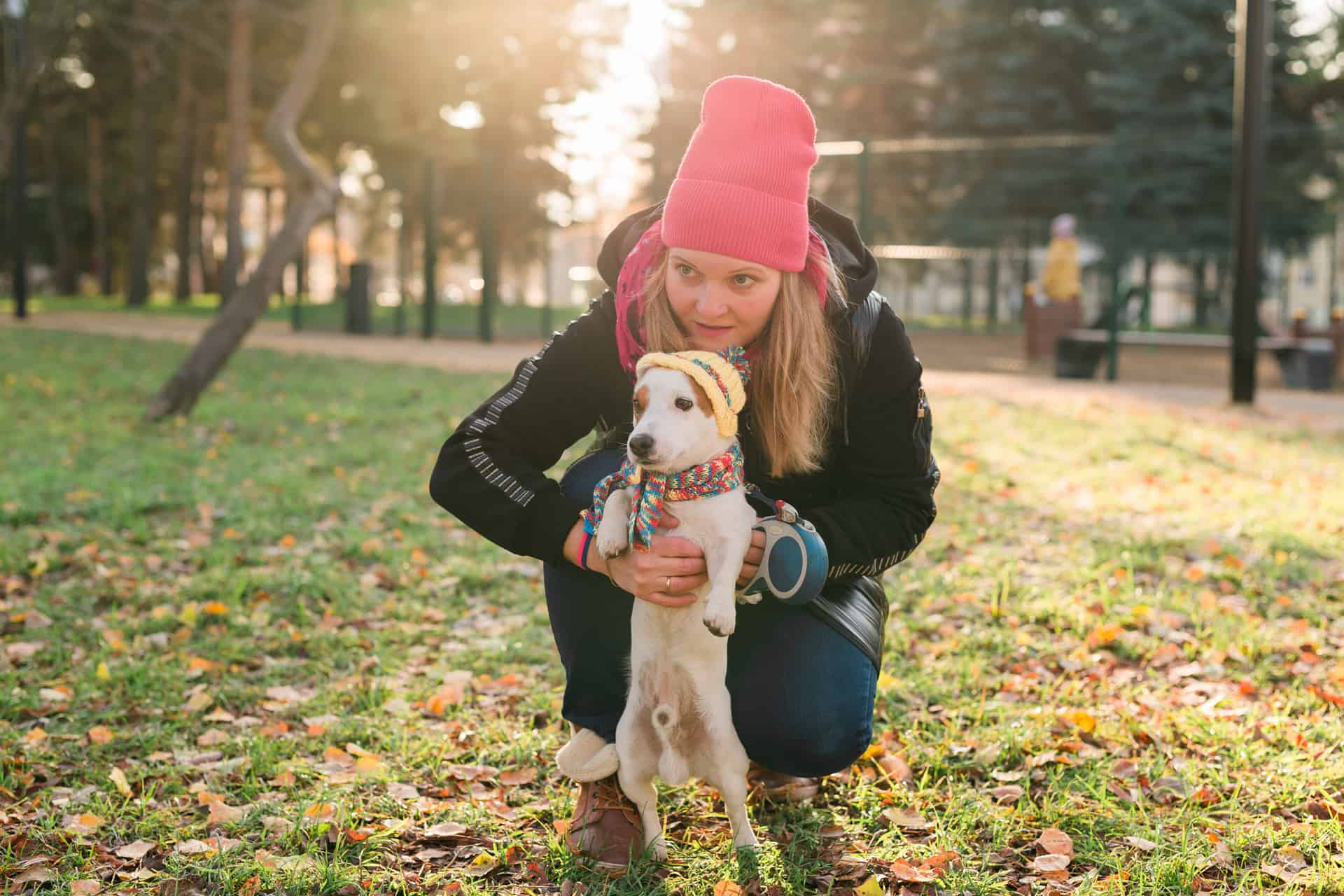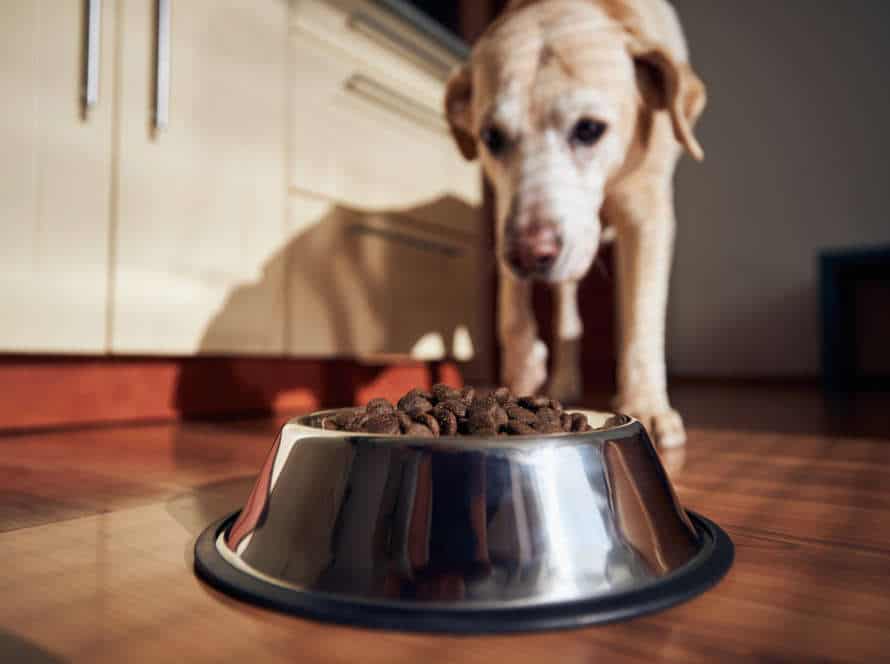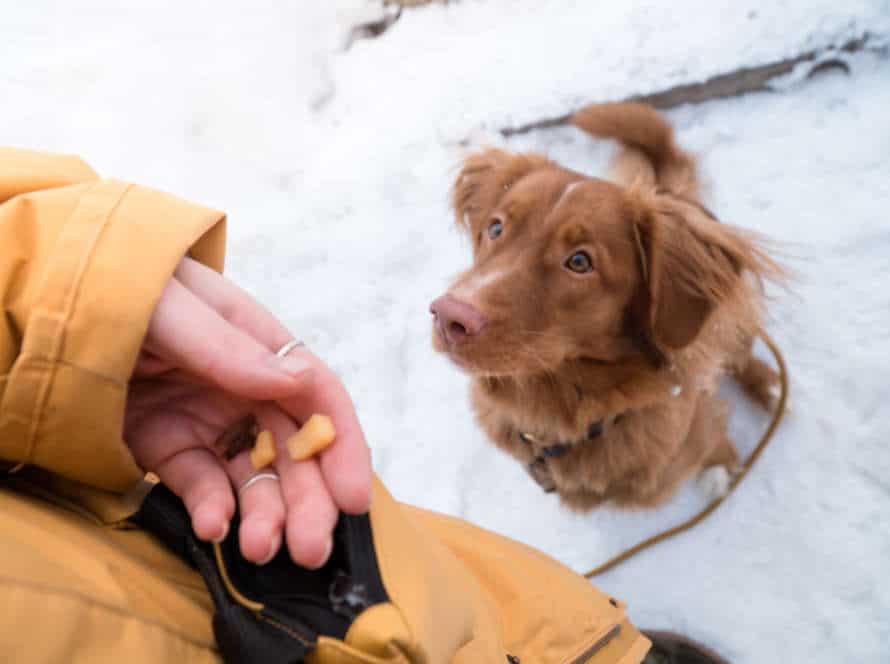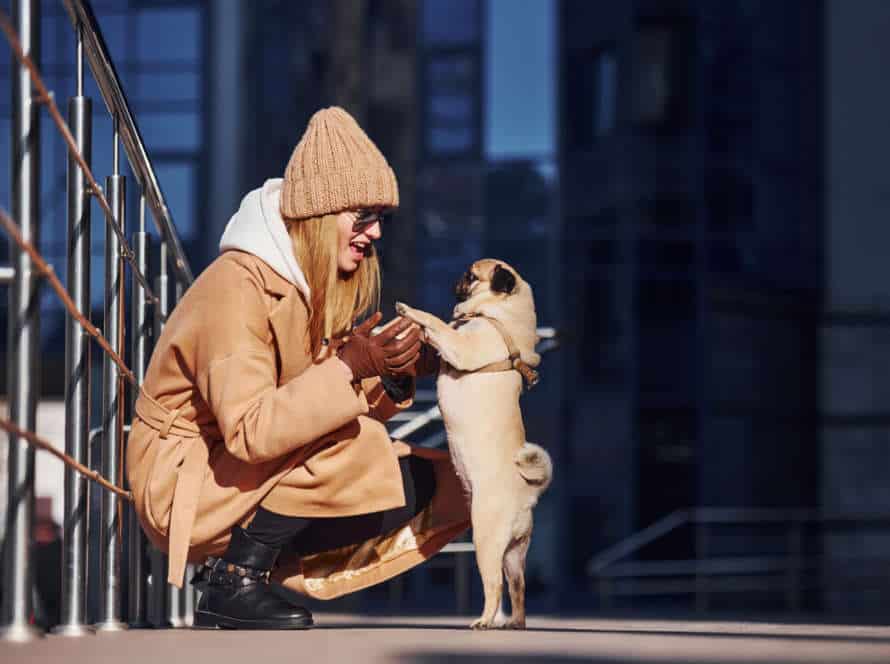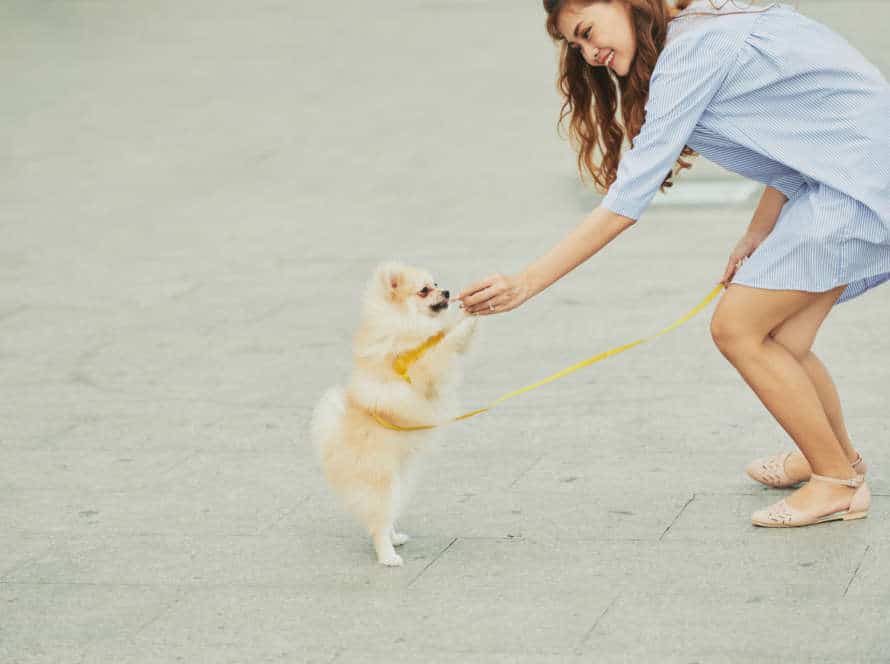Puppy Exercise Tips: Keeping Your Little One Active and Happy
Ensuring your pup is active & content is essential for their health & happiness. Here are some puppy exercise tips to achieve this:
- Start slow. Pups have lots of energy but lack staying power. So, begin with short strolls and step up the distance as they grow.
- Playtime! Participating in physical activities, such as chasing a ball or tug-of-war, strengthens your bond while keeping them active.
- Variety. Changing up activities keeps your pup from getting bored & they’ll look forward to the next fun activity!
- Outdoor activities. Take your pup for hiking or camping – it exposes them to new smells, sights & sounds.
- Rest. Just like humans, puppies need time-out! Don’t overdo it on the exercise routine.
By following these tips, your precious pup will be happy, healthy & always ready for a game of fetch!
Why Exercise is Important for Puppies
Exercise is essential for a pup’s growth.
It keeps them healthy, aids in better sleep and helps them to get accustomed to a regular schedule. But, it also has mental and emotional benefits too. It helps to develop problem-solving skills, boosts their self-confidence and strengthens the connection between you and your pup. Let’s discover why exercise is so important for puppies.
Health Benefits of Exercise for Puppies
Exercise is vital for puppies’ growth and wellbeing. Not only does it keep them active and content, but it also offers lots of health advantages, which are crucial for their development. Here are some of these benefits:
- Stronger bones and muscles: Exercising routinely will strengthen bones and muscles, enhancing a puppy’s coordination, balance, and mobility.
- Prevents obesity: It helps to burn off excess calories and maintain a healthy weight, decreasing the risk of obesity in puppies.
- Better cardiovascular health: Dogs who exercise frequently possess a stronger heart, healthier blood vessels, and better blood circulation.
- Improved mental health: Exercise lessens tension, anxiety, and depression in puppies, boosting their mental and emotional wellbeing.
To keep your pup moving and content, you can go on daily walks, play fetch, and engage in interactive games like tug of war. However, it’s essential to consult a veterinarian before beginning any workout plan to ensure it’s safe and suitable for your puppy’s age, breed, and health status.
Mental Benefits of Exercise for Puppies
For a pup’s mental and physical health, regular exercise is key. Pups who get active are less anxious, act less destructively, and have more confidence. Plus, it helps strengthen the bond between pup and owner.
Here are some tips to keep your pup fit and cheerful:
- Choose age-suitable activities like short walks, low-impact play, and easy training.
- Make exercise fun with toys, treats, and games.
- Avoid strenuous activity, especially in hot or humid weather.
- Give pup structure and routine by scheduling exercise sessions at regular intervals.
Exercise is more than just physical health – it can better their mental and emotional well-being, too.
Behavioral Benefits of Exercise for Puppies
Exercise is essential for puppies’ growth and welfare – physically and mentally. It offers many benefits, such as:
- Cutting down on destructive habits, like chewing, digging, and excessive barking.
- Enhancing mental stimulation, eliminating boredom, and calming anxiety.
- Boosting social skills and self-confidence, making it easier to cope with new situations and encounters.
- Encouraging healthy sleep and reducing stress levels, resulting in better health and a longer life.
How to get your pup the right amount of exercise? Here are some tips:
- Start with simple, low-impact activities like walking, running, and fetch.
- Increase the intensity and duration with pup’s growth.
- Use toys and treats to keep pup engaged and motivated.
- Give pup access to water and shade when outside.
- Observe pup while exercising and watch out for signs of tiredness and discomfort.
Bonus tip: Exercise is enjoyable for both you and your pup!
Exercise Guidelines for Puppies
Exercise is a must for a pup’s wellbeing, physically, mentally and emotionally. Setting up an exercise plan and abiding by it can do wonders for your pup’s mood. Walks and outdoor activities are great ways to keep your pooch healthy and active. Let’s check out some exercise tips and ideas to keep your pup in good shape and content.
How Much Exercise do Puppies Need?
Puppies need to stay active and healthy, both physically and mentally. But, be careful not to overdo it since their bones and joints are still developing. Here are exercise guidelines and tips.
For pups under 3 months old: Focus on playtime and socialization. Short walks, indoor play, and puppy playdates are great!
For 3 to 6 months: Take them on short walks, but keep them on softer surfaces like grass. Avoid stairs and jumping.
For 6 to 12 months: Go on longer walks and let them do more challenging activities. Monitor their activity level and don’t let them overdo it.
Tips: Play fetch or tug-of-war with your pup. Change up their activities to keep them mentally stimulated. Always monitor your pup’s energy levels and behavior during exercise.
Pro Tip: Talk to your vet about a suitable exercise routine for your pup and any breed-specific considerations.
Best Types of Exercise for Puppies
Exercising is key for pups and adult dogs alike. The type of exercise should suit their needs. Short walks are best for puppies under 6 months. That’s because their bones and joints are still developing.
Playtime is a great way to get them moving! You can play fetch, tug-of-war, or buy interactive toys like chew toys and puzzle feeders.
Puppy classes are also a great option. They can get socialized and exercise through activities like obedience training and agility courses.
Swimming is also an awesome low-impact workout. Plus, it’s a cool way to beat the summer heat!
Remember that puppies need different amounts of exercise at different stages of development. So, be mindful of their energy levels and give them time to rest.
Common Mistakes to Avoid During Puppy Exercise
Exercising with your pup is a fab way to keep them in tip-top shape and content. But, many pet owners make mistakes when exercising their furry pals. Here are some mistakes to dodge when pup exercising:
- Over-exercising: Straining bones and muscles can cause long-term health issues. Follow the exercise guidelines for your pup’s breed and age. Also, give them time to rest between playtime and walks.
- Not using a leash: A leash can stop your pup from running into traffic, getting lost or hurt, and chasing after other dogs. Ensure to use a leash when taking your pup for a walk or to the park.
- Exercising during hot weather: Pups are vulnerable to heat exhaustion and heatstroke during hot weather. Avoid exercising your pup during the hottest parts of the day or on hot pavement.
- Not warming up: Similar to humans, puppies need to warm up before exercising to stop injuries. Start your pup’s exercise routine with a few minutes of gentle stretching and walking.
- Ignoring signs of fatigue: It’s important to notice your pup’s body language during exercise. If your pup seems tired, panting, or lagging behind, take a break and give them some water and rest.
By dodging these common mistakes, you can make sure your pup gets the exercise they need while staying safe and content.
Fun Exercise Ideas for Puppies
Keeping your pup in tip-top shape needs exercise! A balanced routine of playtime, walks and other activities is essential. To make it fun, here are some ideas to keep your pup active and entertained!
Indoor Exercise Ideas for Puppies
Indoor exercise is a must for pups, especially on bad weather days. Here are some fun and exciting ways to keep your pup active and happy:
- Hide and Seek: Hide treats around the house and get your pup to search for them. It’s a great way to get them moving and use their sense of smell.
- Stair Run: Transform your stairs into a workout area. Encourage your pup to run up and down a few times, making sure they don’t hurt themselves.
- Tug-of-War: This classic game is perfect for puppies, as it lets them use their teeth and strength while getting energy out. Use a toy that is safe for them to play with.
- Laser Light: Use a pet-safe laser pointer to get your pup moving. It’s an excellent way to keep them engaged for a long time inside.
- Puppy Yoga: Do some yoga with your furry friend. It’s a good way to promote a calm atmosphere while getting your pup to stretch and move.
Pro Tip: Always watch your pup while they exercise and make sure they have enough water. These indoor exercises will help your little one expend energy and strengthen your bond.
Outdoor Exercise Ideas for Puppies
Getting active with your pups is great for their physical health and development. Here are some fun outdoor exercise ideas to keep them moving and happy:
- Fetch – throw balls or frisbees.
- Tug of War – use a tug toy.
- Hide and Seek – hide treats or toys in the yard to find.
- Agility exercises – set up low hurdles, tunnels and cones to improve focus, coordination, and balance.
- Water play – sprinklers, kiddie pools, or lakes can cool off while having fun.
Remember to adjust exercises to pup’s age, breed, and energy level. Keep them hydrated and give breaks when needed. Pro tip: Use high-value treats to make it more enjoyable!
Games and Toys for Puppy Exercise
Exercising your pup is a must for keeping them happy, healthy, and well-behaved. There are loads of games and toys to make sure they get a fun and engaging workout. Here are a few ideas:
- Fetch: Throw a toy and watch your puppy bring it back to you. It’s great for improving agility and coordination, plus burning off energy.
- Tug-of-war: Your pup gets a full-body workout plus strong jaw muscles with this game. Use a safe, sturdy tug toy.
- Interactive puzzle toys: Stimulating mentally and stopping boredom. Fill with treats or kibble to keep your puppy motivated.
- Agility courses: Set up an obstacle course with tunnels, cones, jumps, and balance beams. Good for coordination and agility.
- Swimming: Low-impact exercise that helps build muscles and coordination. Introduce water slowly and supervise them.
Start slow, gradually build intensity and duration. Safety first, have fun!
Safety Tips for Puppy Exercise
Exercise is key for your pup’s health and joy. But, you must be careful when exercising your puppy for safety. Here are some tips to keep your pup safe.
- Select the best type of exercise.
- Also, get the safety gear needed.
These tips will help keep your pup safe.
Heatstroke Prevention for Puppies
Heatstroke can be fatal for puppies – here are some safety tips to prevent it:
- Avoid exercising your pup between 10am and 4pm.
- Take water and a bowl when going for walks or activities outdoors.
- Don’t exercise your pup on hot pavement as it can burn their paws.
- Exercise in cooler, shady areas.
- Watch for signs of heat exhaustion or heatstroke, like panting, drooling, vomiting, lethargy and collapsing. If you spot any of these, take your pup to a cool and shaded area, wet them with cool water and contact the vet right away.
Pro tip: Talk to your vet if you’re unsure about your puppy’s exercise needs or how to prevent heatstroke.
Injury Prevention for Puppies During Exercise
Injury prevention is vital when exercising puppies. Keeping a few safety hints in mind will help make sure your furry pal stays healthy, content, and energetic. Here are some top practices for when exercising your puppy:
- Start low: Puppies have lots of energy but also have developing bones and muscles. It’s important to start at a low level and slowly build up the intensity and length of exercise.
- Avoid hot pavement: Hot pavement can burn puppy paws, so it’s best to stay away from it during the hottest parts of the day or find shady spots.
- Look out for signs of exhaustion: Puppies tire quickly, specially during intense exercise. Look out for signs of tiredness, such as panting heavily, lagging behind or slowing down.
- Keep your pup hydrated: Always bring water with you and urge your pup to drink regularly when exercising.
- Skip high-impact exercise: High-impact exercises, like jumping or running, can be tough on growing puppy joints. Pick low-impact exercises like swimming, short walks, or fetch.
By adhering to these tips, you can help safeguard your puppy and keep them happy during exercise!
How to Monitor Your Puppy During Exercise
Exercising your pup is essential for their physical and mental health. But monitoring them is just as important to make sure they are safe. Here are some hints to remember when monitoring your puppy while exercising:
- Begin with small, low-intensity exercises. To avoid injury or exhaustion.
- Keep an eye on their breathing. Heavy panting, wheezing, or breathing difficulty are signs they are overexerting.
- Look out for signs of tiredness. If they start to lag behind, not walk, or lie down, it may be time for a break or to end the session.
- Scan the area for potential hazards. Objects, plants, hot surfaces, etc.
- Offer water before, during and after exercise. To avoid dehydration.
By following these tips, you can keep your pup active, content and safe during exercise.
Conclusion: Raising a Happy, Healthy Puppy Through Exercise
Wrapping up, exercise is essential to having a happy, healthy puppy. It helps them expend energy, stay at a healthy weight, and get along with other dogs and people.
A few puppy exercise tips to consider:
- Start off slow. Start with short walks and little playtime. Increase the time and difficulty as your pup grows.
- Know their breed. Different breeds need different kinds of exercise and in different amounts. Understand your pup’s needs for the right routine.
- Make it entertaining. Keep the exercise interesting for both of you with activities like fetch and tug-of-war.
- Include training. Use exercise time to reinforce good conduct and commands.
- Don’t forget breaks. Puppies need rest too. Give them lots of chances to take naps and relax.
Frequently Asked Questions
Q: How much exercise does a puppy need?
A: Puppies generally require at least 30 minutes to 1 hour of exercise per day, depending on their breed and age.
Q: What are some good exercises for puppies?
A: Walking, playing fetch, and running in a fenced area are all great exercises for puppies. Training sessions that include physical activity, such as obedience training or agility courses, are also excellent options.
Q: Can puppies go on long walks?
A: Puppies should gradually build up their endurance and stamina for longer walks. It’s usually best to start with shorter walks and gradually increase the distance as your puppy gets older and more active.
Q: When should puppies not exercise?
A: Puppies should not exercise too rigorously immediately after eating or when the weather is very hot or cold. This can put excessive stress on their growing bodies and may cause injury or illness.
Q: How can I make exercise more fun for my puppy?
A: Use toys, treats, and positive reinforcement to make exercise more enjoyable for your puppy. Change up the activities regularly to keep them engaged and interested.
Q: Do puppies need rest days?
A: Puppies, like humans, require rest days to recover and allow their bodies to repair and grow. It’s important to allow for rest days in your puppy’s exercise routine and not overwork them.

